A renovated building and expanded mission mean a new day for Wilder special needs school
| Published: 04-10-2021 9:23 PM |
HARTFORD — Doug Heavisides wasn’t looking for a new job.
He’s nearing the end of his ninth year as the director of the Hartford Area Career and Technology Center, where he’s hired much of the staff during his tenure. He’s currently serving as the president of the Vermont Association of Career and Technical Education Directors.
“The tech center, this place just rocks,” Heavisides said. “It’s just a high-functioning school with really great teammates.”
But over a 29-year career in Hartford’s schools — 17 years as a high school English teacher and 12 at the tech center — Heavisides has developed an affinity for students who come to the classroom with significant challenges, whether from poverty or trauma, mental illness or developmental disabilities.
So when the Hartford School District decided to create a principal position for the newly renovated Wilder School, Heavisides thought and prayed over whether to seek it and ended up taking the job.
“The students that I really feel called to support and work with are the students who have the deepest and hardest struggles,” he said.
Hartford voters approved a $5.4 million bond issue in March 2019 to renovate the 109-year-old Wilder School. The construction project was slowed by the pandemic, but the Regional Alternative Program (RAP), which serves students in grades 1-12 with severe behavioral difficulties, and the Hartford Autism Regional Program (HARP), which serves students with autism and related developmental disabilities, moved into the completed building in January.
Previously, the programs had been in separate locations, the RAP at the Wilder School and HARP farther north, near Hartford’s border with Norwich. The renovation of the Wilder School was meant to bring them under one roof so they could more easily share resources, mainly staff such as counselors, speech and language pathologists and occupational therapists.
Article continues after...
Yesterday's Most Read Articles
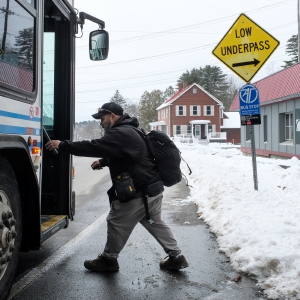 Upper Valley winter shelters kept dozens warm and dry
Upper Valley winter shelters kept dozens warm and dry
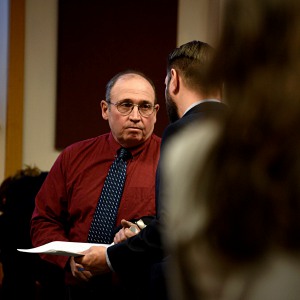 Former principal of South Royalton School released from prison
Former principal of South Royalton School released from prison
 Owner of Friesian horse facility ordered to pay care costs for seized animals
Owner of Friesian horse facility ordered to pay care costs for seized animals
As Heavisides put it, the aim is to take two programs currently in the same building and turn them into a school that has two programs.
“I would say that my role is to work with the teams at HARP and RAP to develop that vision,” he said.
Having a principal overseeing the Wilder School will give the students in the two programs the same kind of oversight that students get in Hartford’s other schools, said Kim Moreno, the Hartford School District’s director of special education.
“I think that Doug is a very forward-thinking leader,” Moreno said. Now that the programs are together, “how can we be more innovative?” she added. “How do we make those programs the best that they can be?”
The Wilder School, which had housed one of Hartford’s elementary schools until Dothan Brook School opened in the mid-1990s, was renovated to accommodate 60-65 students, around 15 in HARP and 45-50 in WRAP, Moreno said.
Right now there are 17 in the autism program and 20 in the alternative program, though enrollment in the latter tends to ebb and flow as students rejoin their home classrooms.
Wilder School falls under the umbrella of the Hartford Area Regional Collaborative, which comprises nine Upper Valley supervisory unions serving around 40 towns. Also in the collaborative is the Regional Resource Center, a program housed at Hartford High School that serves students up to age 21 with developmental delays and multiple disabilities.
Hartford hosts the programs, members get first dibs on seats in the programs and the collaborative agreement is up for renewal June 30. The Regional Resource Center got its start in 1983, the alternative program in 1995 and the autism program in 1998.
Improving the programs also aims to bring in more students, Moreno said. Districts have their own programs and also will place students outside their districts on a case-by-case basis.
“There is competition, and I think that’s one of the real benefits of bringing Doug into a position like this,” she said. He will have an eye both on the work of the school and on opportunities to serve more students from within the collaborative and outside it. “I think he’s really going to expand our enrollment,” Moreno said.
Raising enrollment benefits Hartford and other sending districts. Tuition is calculated by dividing the cost of the program by the number of students, so expanding the number of students will help bring tuition down, though that will depend on whether the school needs to hire more staff, Moreno said.
Tuition rates for the current year are $48,122 per student for the alternative program and $82,440 per student for the autism program, Hartford Superintendent Tom DeBalsi said. “The tuition rates may go up,” he added, “but if we can attract more students, the rates will go down. It is still too early to tell what next year’s tuition will be.”
The Wilder School project was completed with around $88,000 in cost overruns, DeBalsi said, which were attributable to items that cropped up during construction: The basement slab needed to be replaced, the builders had to frame in a new chase for pipes and wiring, and the staircases had to be replaced because of their age and poor construction. The costs will be covered out of the district’s general fund facilities budget, DeBalsi said.
Heavisides, who turns 50 next month, noted that his father, who’s also named Doug Heavisides, was on the committee that planned the Wilder School project and the bond issue. He seemed almost sheepish that he’ll be leading a school his father helped to build.
“This wasn’t even on my radar until about a month ago,” Heavisides said. His job change takes effect July 1.
For the rest of the current school year, Heavisides, who grew up in Hartford and went through Hartford’s schools, said he plans to keep up with the tech center’s demands, but he’s also dropping in on the Wilder School on Fridays, often with his therapy dog Clarabelle, a 9-year-old golden retriever.
“It’s really a bittersweet experience for me,” he said. As much as he loves leading the tech center, “oftentimes I find myself feeling a mile wide and an inch deep,” he said.
Wilder School is more contained, he said, but creating a culture and a vision that serve its students will be equally hard work.
“I hope my skill set as a school leader translates well,” he said.
Alex Hanson can be reached at ahanson@vnews.com or 603-727-3207.

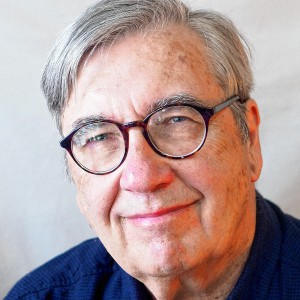 Over Easy: ‘A breakfast without a newspaper is a horse without a saddle’
Over Easy: ‘A breakfast without a newspaper is a horse without a saddle’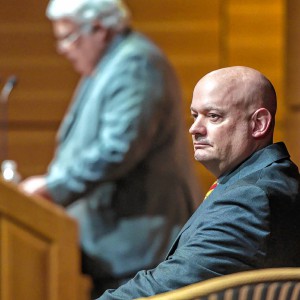 Lawsuit accuses Norwich University, former president of creating hostile environment, sex-based discrimination
Lawsuit accuses Norwich University, former president of creating hostile environment, sex-based discrimination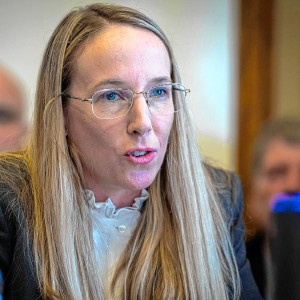 In divided decision, Senate committee votes to recommend Zoie Saunders as education secretary
In divided decision, Senate committee votes to recommend Zoie Saunders as education secretary
